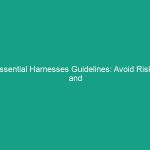Introduction
In the modern workplace, safety and security have become paramount concerns for employers and employees alike. The increasing incidence of workplace violence, particularly active shooter situations, has underscored the necessity for a comprehensive approach to health, safety, and Environment (HSE) protocols. An effective active shooter response plan is crucial in mitigating risks and ensuring the Safety of individuals in the event of such a crisis. This article delves into the components of an active shooter response plan, the regulatory frameworks governing Workplace Safety, best practices to implement, and the importance of preparedness.
Understanding the Regulatory Framework
Before diving into the specifics of an active shooter response plan, it is essential to understand the regulatory landscape that governs Workplace Safety. Various federal and state Regulations mandate that employers provide a safe working environment. The Occupational Safety and Health Administration (OSHA) plays a pivotal role in establishing these Standards.
osha Guidelines
OSHA provides guidelines that encourage employers to assess workplace Hazards, including the potential for violence. While OSHA does not have specific regulations solely focused on active shooter incidents, it emphasizes the need for a safe workplace that includes Training and preparedness for emergencies. Employers are required to develop and implement Safety programs that incorporate training employees on how to respond to various types of emergencies, including active shooter scenarios.
State Legislation
In addition to federal regulations, many states have enacted their own laws regarding workplace violence Prevention. Some states require employers to develop violence prevention programs, which should include protocols for responding to an active shooter incident. It is important for businesses to be aware of their state laws and ensure compliance to avoid legal repercussions.
Components of an Active Shooter Response Plan
An effective active shooter response plan is multifaceted, encompassing several key components that work together to create a safe environment. Understanding these components is essential for developing a robust plan that can be executed in times of crisis.
1. Risk Assessment
The first step in creating an active shooter response plan is conducting a thorough risk assessment. This involves identifying potential threats specific to the workplace environment. Employers should evaluate factors such as location, employee demographics, and previous incidents of violence to tailor their response plans accordingly. A comprehensive risk assessment helps organizations understand vulnerabilities and develop strategies to mitigate them.
2. Emergency Response Team
Establishing an emergency response team is crucial. This team should consist of trained individuals who are responsible for implementing the active shooter response plan. Members of the team should undergo regular training and drills to ensure they are prepared to act quickly and effectively in the event of an incident. Having a designated team can streamline communication and coordination during a crisis.
3. Training and Drills
Regular training sessions and drills are vital for ensuring that all employees understand the components of the active shooter response plan. Training should cover topics such as recognizing warning signs, understanding escape routes, and utilizing lockdown Procedures. Drills should be conducted at least twice a year to keep the information fresh in employees’ minds and to identify areas for improvement in the response plan.
4. Communication Protocols
Effective communication is key during a crisis. The active shooter response plan should include clear communication protocols that outline how information will be disseminated before, during, and after an incident. This may involve using a mass notification system to alert employees of an active threat and providing instructions on how to respond. Ensuring that all employees are aware of these protocols can significantly enhance safety and response times.
5. Post-Incident Procedures
After an active shooter incident, the response does not end. The plan should include post-incident procedures that focus on addressing the emotional and psychological needs of employees. Providing access to counseling services, conducting debriefings, and reviewing the effectiveness of the response can help the organization recover and improve future preparedness. Understanding that the aftermath can be just as critical as the immediate response is essential for comprehensive safety planning.
Best Practices for Implementation
Implementing an active shooter response plan requires dedication and attention to detail. Here are some Best Practices to ensure that your plan is effective and actionable.
1. Involve Employees in the Planning Process
Engaging employees in the development of the active shooter response plan fosters a sense of ownership and accountability. Employees are often the first line of defense in a crisis, and their input can provide valuable insights into potential vulnerabilities. By involving them in the planning process, organizations can create a more comprehensive and effective response plan.
2. Regularly Update the Plan
As workplace dynamics change, so too should the active shooter response plan. Regularly reviewing and updating the plan ensures that it remains relevant and effective. Changes in personnel, physical layout, or even external threats should prompt a re-evaluation of the existing plan. Keeping the plan dynamic and adaptable can significantly enhance its efficacy.
3. Foster a Culture of Safety
Creating a culture of safety within the workplace is essential for effective implementation of the active shooter response plan. This involves promoting open communication about safety concerns, encouraging employees to report suspicious behavior, and providing ongoing training opportunities. A workplace that prioritizes safety can better prepare its employees for potential threats.
4. Collaborate with Local Law Enforcement
Establishing a partnership with local law enforcement can greatly enhance the effectiveness of an active shooter response plan. Law enforcement agencies can provide valuable resources, training, and insights into Best Practices for emergency response. Additionally, coordinating with local authorities can facilitate quicker response times during an actual incident.
5. Utilize Technology
Technology can play a significant role in enhancing Workplace Safety. Implementing security systems, such as surveillance cameras and access Control Measures, can deter potential threats and provide critical information during an incident. Furthermore, utilizing communication technologies can streamline emergency notifications and keep employees informed in real-time.
Case Studies: Learning from Real-World Incidents
To understand the importance of an active shooter response plan, it is helpful to examine real-world case studies. These incidents illustrate the need for preparedness and the impact of effective response plans.
1. The Fort Hood Shooting
The Fort Hood shooting in 2009 was a tragic event that resulted in the loss of 13 lives. In the aftermath, it became evident that a lack of preparedness and communication contributed to the chaos. The incident highlighted the necessity for organizations to establish clear protocols and conduct regular training to ensure employees know how to respond effectively to an active shooter situation.
2. The Pulse Nightclub Shooting
During the 2016 Pulse Nightclub shooting, the rapid response of law enforcement and the establishment’s security protocols helped mitigate further loss of life. The venue had conducted regular training and drills, which allowed staff to react quickly and efficiently. This incident underscores the importance of having a well-developed active shooter response plan in place.
3. The Sandy Hook Elementary School Shooting
The Sandy Hook Elementary School shooting in 2012 resulted in devastating losses and sparked national conversations about School Safety and emergency preparedness. Following this incident, many educational institutions implemented comprehensive active shooter response plans, including regular drills and collaboration with local law enforcement. This case serves as a poignant reminder of the need for proactive measures to protect vulnerable populations.
Challenges in Developing an Active Shooter Response Plan
While the importance of an active shooter response plan is clear, organizations often face several challenges in its development and implementation.
1. Employee Reluctance
One of the significant challenges is employee reluctance to participate in training and drills. Many individuals find discussions about violence uncomfortable and may be resistant to engaging in active shooter preparedness. Addressing these concerns through open communication and emphasizing the importance of safety can encourage participation and foster a culture of preparedness.
2. Resource Allocation
Developing and implementing an active shooter response plan requires resources, including time, personnel, and funding. Smaller organizations may struggle to allocate the necessary resources to create a comprehensive plan. Finding ways to integrate safety training into existing programs or seeking partnerships with local safety organizations can help mitigate this challenge.
3. Staying Updated with Evolving Threats
The nature of threats continues to evolve, making it essential for organizations to stay informed about the latest developments in workplace violence. Keeping the response plan updated with current information and best practices can be overwhelming for some organizations. Establishing a designated safety officer or team can help ensure that the plan remains relevant and effective.
Future Trends in Active Shooter Preparedness
As we look to the future, it is crucial to adapt and evolve our approaches to active shooter preparedness. Several trends are emerging that will shape the landscape of Workplace Safety.
1. Increased Use of Technology
The integration of advanced technology into active shooter response plans is becoming more prevalent. Organizations are increasingly utilizing artificial intelligence, surveillance systems, and emergency notification platforms to enhance their preparedness. These technologies can provide real-time data and facilitate quicker responses during emergencies.
2. Focus on Mental Health
Recognizing the importance of mental health is becoming a significant trend in Workplace Safety. Organizations are beginning to address the psychological impacts of workplace violence and are incorporating mental health resources into their active shooter response plans. Providing access to counseling services and promoting mental well-being can help employees cope with the aftermath of an incident.
3. Community Collaboration
Collaboration among businesses, law enforcement, and community organizations is becoming increasingly important for effective active shooter preparedness. By working together, these entities can share resources, knowledge, and training opportunities that enhance overall safety in the community. Establishing partnerships can create a unified approach to addressing workplace violence and ensuring better preparedness.
Conclusion
In conclusion, developing an effective active shooter response plan is essential for ensuring workplace safety and protecting employees. By understanding the regulatory framework, implementing best practices, and learning from real-world incidents, organizations can create comprehensive plans that prepare them for the worst. Addressing challenges and staying abreast of evolving trends can further enhance preparedness. Ultimately, fostering a culture of safety and open communication will empower employees to take an active role in their safety. It is time to take action—review your organization’s active shooter response plan today and ensure that you are prepared for whatever may come your way.


